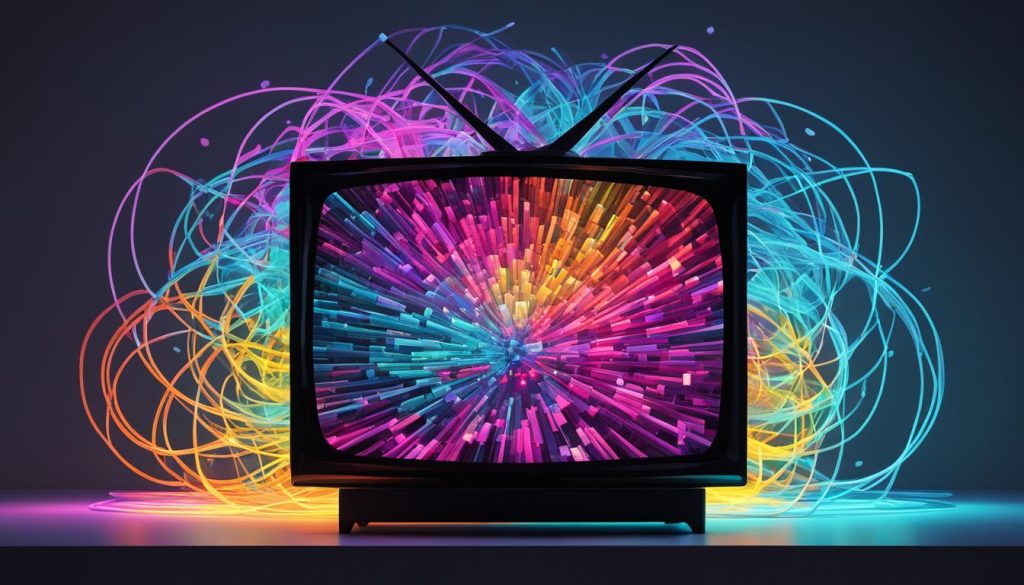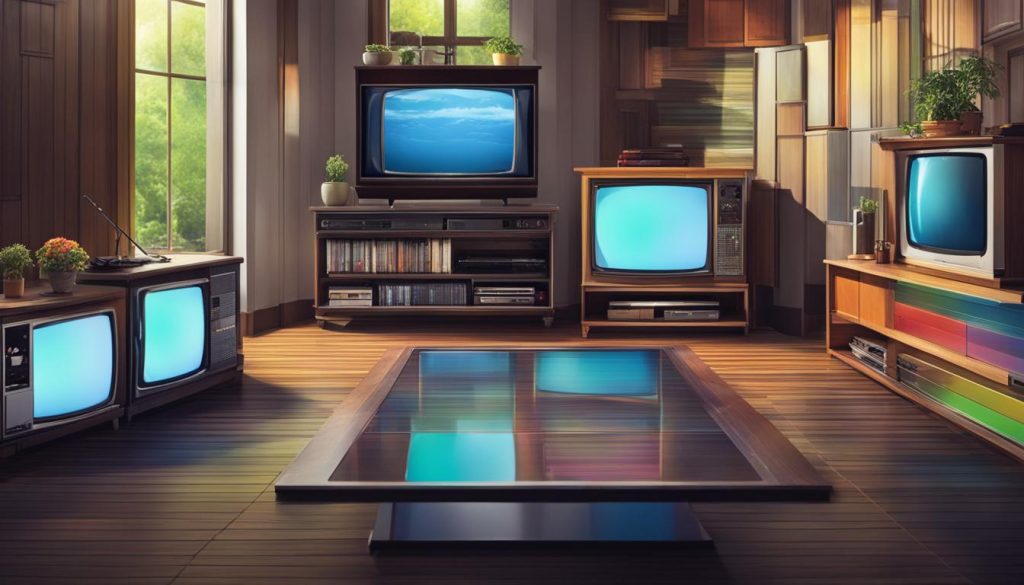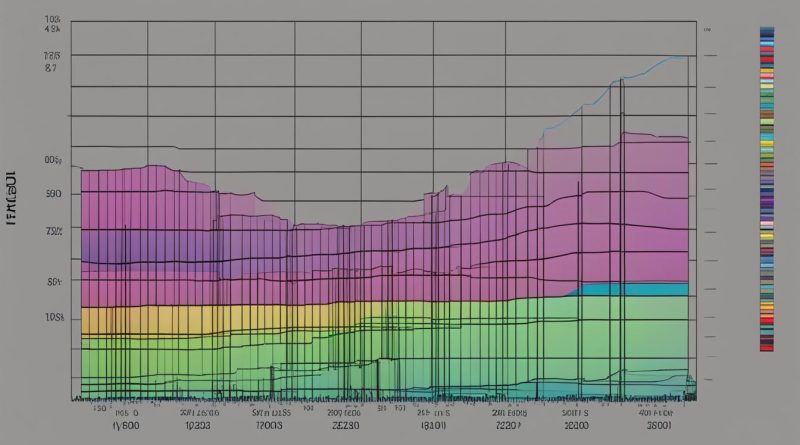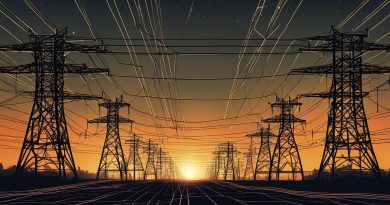Electricity Consumption of TVs Unveiled
Television sets are an integral part of modern life. However, have you ever wondered how much electricity your TV uses? Understanding the electricity consumption of TVs is essential for managing energy usage and reducing costs. This section will explore the energy usage of television sets, factors that affect power consumption, and tips on increasing efficiency.
Key Takeaways
- Understanding the electricity consumption of TVs is crucial for reducing energy waste and costs.
- Factors such as screen size, display technology, brightness settings, and usage patterns impact the power consumption of televisions.
- Reducing standby power consumption and increasing efficiency can significantly reduce energy usage.
- Choosing an energy-efficient TV and adjusting settings can also help manage energy usage.
- Regular maintenance and monitoring of energy usage can aid in optimizing energy efficiency.
Factors Affecting TV Power Consumption
Television power consumption varies depending on several factors. In this section, we will discuss these factors and how they contribute to the electricity usage of televisions.
The higher the power consumption, the greater the impact on the environment and your wallet.
Screen Size
The larger the screen, the higher the power consumption of a television.

According to a study by the Natural Resources Defense Council, a 32-inch LCD television uses about 50 watts of electricity while a 60-inch LED television consumes up to 150 watts. Displaying bright images, particularly in larger screens, increases the power consumption.
Display Technology and Brightness Settings
Different display technologies, such as LED, LCD, OLED, and Plasma, have varying levels of energy efficiency. OLED and Plasma screens typically consume more energy than LED and LCD displays. Controlling the brightness settings of a television also helps save energy.
Usage Patterns
How often and how long a television is used affects its power consumption. Leaving a television on for hours without anyone watching substantially increases energy consumption. Additionally, streaming content uses more electricity than watching cable or over-the-air television.
By being mindful of these factors, we can make informed decisions to optimize the energy efficiency of our televisions.
Understanding the Energy Usage of Television Sets
Televisions are a significant contributor to household energy consumption. It’s not just about the electricity consumption during TV viewing, but also the electricity consumption in standby mode.
Most televisions consume energy in standby mode, also known as ‘off mode.’ In standby mode, the television may not be displaying an image, but it is still consuming energy. This is because it is ready to turn on when a signal is received from a remote control or another device.
According to the Energy Saving Trust, a typical television consumes around 23 watts of electricity when in standby mode. This consumption may appear small, but it can add up over time when left unmanaged. A family that leaves their television in standby mode for 18 hours a day will consume 300 kWh of electricity annually, leading to increased energy bills and carbon footprint.
Therefore, it’s essential to understand and manage the energy usage of television sets. One effective way to reduce energy consumption in standby mode is to use a power strip. A power strip can help cut-off the standby power when the devices are not in use, reducing energy waste. Alternatively, using the television’s power-saving settings or turning it off completely can also help save energy.

The image above provides an overview of the electricity consumption of televisions in different modes. It’s essential to note that the energy consumption varies significantly depending on the brand, model, and size of the television.
Comparison of Electricity Consumption in Different Modes
| Television Brand and Model | Active Mode (watts) | Standby Mode (watts) |
|---|---|---|
| Samsung 43-inch 4K Smart LED TV | 99 | 0.03 |
| Sony 55-inch Bravia OLED TV | 215 | 0.53 |
| LG 65-inch NanoCell 4K UHD Smart TV | 162 | 0.5 |
The table provides a comparison of the electricity consumption in active mode and standby mode for televisions from different brands and models. As evident from the data, TVs with larger screens, higher resolution, and advanced features tend to consume more energy in active mode.
Overall, understanding the energy usage of television sets is crucial for managing energy bills and reducing carbon footprint. By being aware of the consumption in different modes and employing energy-saving strategies, households can make a significant impact on reducing energy waste.
Conclusion
Understanding the electricity consumption of TVs is crucial for managing energy usage and reducing waste. With the various factors that affect energy consumption, including screen size, display technology, brightness settings, and usage patterns, it’s important to optimize settings and usage habits to increase efficiency.
It’s also essential to consider the energy usage of TVs during both active use and standby mode. While standby power consumption may seem small, it can accumulate over time and lead to unnecessary energy waste. Implementing strategies such as unplugging the TV when not in use or using a smart power strip can help minimize standby power consumption.
Overall, balancing entertainment needs with energy efficiency is possible with proper understanding and management of TV electricity consumption. By implementing the tips and strategies outlined in this article, individuals can make a positive impact on the environment and save on energy bills, all while enjoying their favourite TV shows and movies.
FAQ
How much electricity does a TV use?
The amount of electricity used by a TV depends on various factors such as screen size, display technology, brightness settings, and usage patterns. On average, a 40-inch LED TV consumes around 60-100 watts of electricity, while larger TVs or those with higher resolution can consume more. It’s important to check the energy consumption rating provided by the manufacturer to get a clearer idea of a specific TV’s power usage.
What factors affect the power consumption of televisions?
Several factors can impact the power consumption of televisions. These include screen size, display technology (such as OLED or LCD), brightness settings, and usage patterns. For instance, larger TVs generally consume more electricity than smaller ones, and OLED panels tend to use less power compared to LCD screens. Additionally, higher brightness settings and extended usage can also increase energy consumption. Therefore, it’s essential to consider these factors when evaluating the power efficiency of a TV.
How does the energy usage of television sets work?
The energy usage of television sets involves both active use and standby mode consumption. During active use, TVs consume electricity to power the screen, processing components, and audio output. Standby mode, also known as standby power consumption, refers to the energy used by the TV even when it appears to be turned off. This power is required for functions such as remote control reception and instant power-on features. While standby power consumption is generally low, it can accumulate over time and contribute to overall energy wastage. To reduce energy usage, it’s recommended to turn off the TV completely when not in use or utilize energy-saving features and power strips.
How can I reduce the electricity consumption of my TV?
To reduce the electricity consumption of your TV, you can follow these tips:
1. Adjust brightness and contrast settings to optimal levels.
2. Enable power-saving features, such as automatic dimming or sleep mode.
3. Avoid running the TV for long periods when not actually watching.
4. Turn off the TV completely when not in use instead of leaving it on standby mode.
5. Unplug the TV or use a smart power strip to completely cut off standby power consumption.
6. Consider investing in energy-efficient TVs with high ratings, such as those certified by ENERGY STAR.
By implementing these measures, you can effectively optimize the energy efficiency of your TV and reduce electricity consumption.




